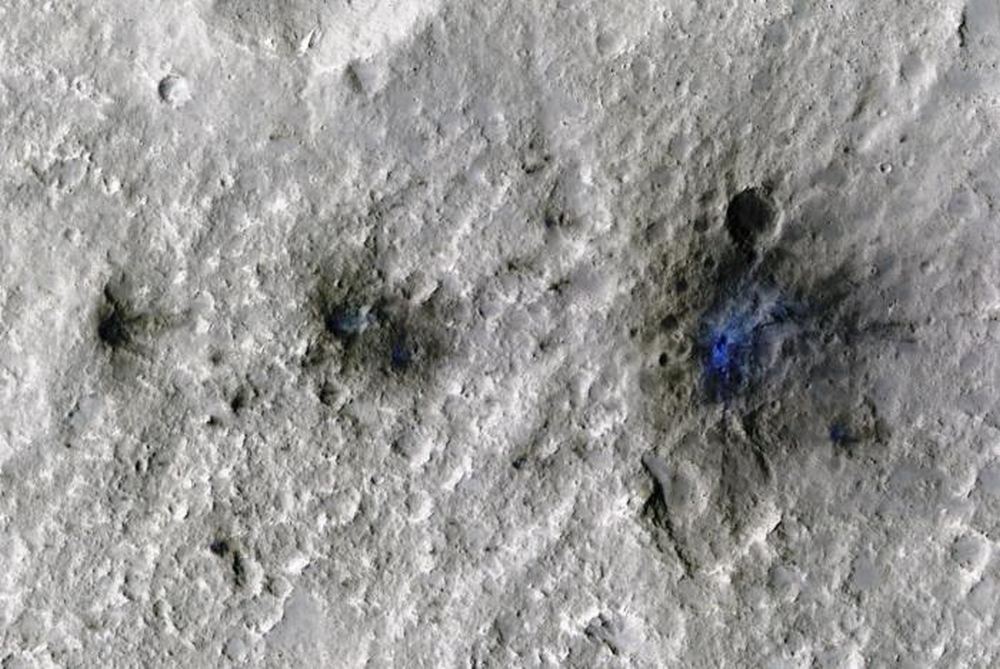If you want to live on Mars, watch your head; it’s raining space rocks. Researchers studying seismic data from NASA’s Mars Insight mission estimate that 280 to 360 meteorites strike the surface of Mars, making a new crataer. This new estimate is about five times larger than predicted by previous estimates that used orbital imagery. On average, an 8-meter crater is created once a day, and a 30-meter crater is created about once a month.
During about three years of recording time, InSight and SEIS detected 70 VF events. 59 of them had good distance estimates, and according to the researchers, a handful of them were “higher quality B VF events,” meaning their signal-to-noise ratios are strong. “Although a non-impact origin cannot be definitively excluded for each VF event, we show that the VF class as a whole is plausibly caused by meteorite impacts,” the authors explain in their paper.
This led to a new estimate of Mars’s impact frequencies. The researchers say that between 280 and 360 meteoroids about the size of basketballs strike Mars each year and excavate craters greater than 8 meters (26 ft) in diameter. That’s almost one every day at the upper end. “This rate was about five times higher than the number estimated from orbital imagery alone. Aligned with orbital imagery, our findings demonstrate that seismology is an excellent tool for measuring impact rates,” Zenhäusern said in a press release.
Impact rates on different bodies in the Solar System are one way of understanding the age of their surfaces. Earth’s surface is young because the planet is so geologically active. Earth is also much easier to study in greater detail, for obvious reasons. But for bodies like the Moon and Mars, impact rates can tell us the ages of various surfaces, leading to a more thorough understanding of their history.
Orbital images and models based on preserved lunar craters have been the main tools used by planetary scientists to infer impact rates. The data from the Moon was used to extrapolate Mars’ impact rate. But there are problems with that method. Mars has more powerful gravity and is closer to the source of most meteors, the asteroid belt.
That means more meteoroids strike Mars than the Moon, and that had to be calculated somehow. Conversely, Mars has widespread dust storms that can obscure craters in orbital images, while the lunar surface is largely static. Mars also has different types of surface regions. In some regions, craters stand out; in others, they don’t. Trying to accurately account for that many differences when extrapolating impact rates from the Moon to Mars is challenging.
This work shows that seismometers can be a more reliable way to understand impact rates.


